Omega-3s and Greater Awareness of Brain-Body Communication
🌿 Introduction: Listening to the Language of Your Body
Your body is always talking to you — through energy, tension, hunger, fatigue, and intuition. But in our fast-paced world, this mind-body conversation often gets drowned out by stimulation, overthinking, and chronic stress.
This disconnect doesn’t just affect your emotions — it alters your biology. When your brain and body fall out of sync, your nervous system stays on alert, digestion slows, inflammation rises, and your sense of inner calm disappears.
Here’s where Omega-3 fatty acids — the essential fats found in fish oil, algae, and flax — step in.
They don’t just benefit your heart and brain; they enhance your capacity to feel, interpret, and regulate what your body is communicating.
Omega-3s literally make your neurons more fluid, helping electrical signals move efficiently between the brain, heart, and gut — the three centers of awareness that shape your mood and perception.
This article explores how Omega-3s improve brain-body communication, why that matters for awareness and resilience, and how to combine nutrition, mindfulness, and breathwork to deepen your internal connection.
Looking for supplements for Brain Fog? Click here.
🧬 Section 1: The Science of Brain-Body Communication

Your brain and body communicate constantly through three main networks:
| System | Function | Awareness Connection |
|---|---|---|
| 🧠 Nervous System | Electrical signaling between brain, heart, and organs | Regulates stress, focus, emotion |
| ❤️ Endocrine System | Hormones transmitting long-term messages | Governs energy and motivation |
| 💧 Immune System | Inflammatory feedback | Influences mood, clarity, and fatigue |
Together, these networks form the neuroimmune axis, a system that shapes how you feel your feelings and embody your mind.
When this communication loop works smoothly, you experience:
Calm emotional awareness
Steady energy and focus
Intuitive decision-making
Reduced anxiety and inflammation
When the loop is disrupted — by poor diet, chronic stress, or inflammation — the signals become noisy. You might experience brain fog, mood swings, or fatigue without knowing why.
Omega-3s act like a signal amplifier, restoring clarity to this biological conversation.
💫 Section 2: How Omega-3s Strengthen Brain-Body Signaling
🧠 Neuronal Fluidity and Signal Transmission
Omega-3s, particularly DHA (docosahexaenoic acid), are structural components of neuronal membranes.
They make these membranes flexible, allowing neurotransmitters like serotonin and dopamine to dock efficiently.
A rigid neuron = poor emotional regulation.
A flexible neuron = clear awareness and adaptive response.
⚡ Neuroinflammation Control
EPA (eicosapentaenoic acid) reduces neuroinflammation — one of the main barriers to mindfulness and emotional balance.
When the brain is inflamed, it becomes reactive rather than reflective.
💞 Heart-Brain Coherence
Omega-3s improve vagal tone — the strength of your vagus nerve, which carries messages between the heart and brain.
High vagal tone correlates with:
Better emotional regulation
Faster stress recovery
Deeper interoception (awareness of body sensations)
🧘 Gut-Brain Communication
The gut produces 90% of the body’s serotonin. Omega-3s nourish gut lining integrity and microbial diversity, enhancing the feedback loop between gut emotions and brain cognition.
🌊 Section 3: The Two Key Omega-3s — EPA and DHA
| Type | Primary Role | Awareness Benefit |
|---|---|---|
| EPA | Anti-inflammatory, mood balance | Stabilizes stress response |
| DHA | Cognitive, neural repair | Sharpens focus and intuition |
Together, they create a calm alertness that supports both mindfulness and insight.
💊 Daily Dose:
1–2 g combined EPA/DHA for most adults
Prefer triglyceride form (better absorption)
Algae oil for plant-based diets 🌿
🌞 Section 4: How Omega-3s Enhance Awareness
🧠 Improved Interoception
Omega-3s improve the brain’s ability to interpret internal body signals (heart rate, tension, temperature).
This helps you notice when you’re anxious before anxiety takes over — the foundation of emotional intelligence.
❤️ Enhanced Emotional Regulation
A well-fed nervous system can feel emotions without being flooded by them.
Studies show Omega-3 supplementation lowers aggression, impulsivity, and anxiety — allowing space between stimulus and response.
🧘 Better Mindfulness and Meditation
Mindfulness requires a quiet, flexible brain. DHA-rich neurons allow smoother communication between the prefrontal cortex (self-awareness) and amygdala (emotional reactivity).
💭 Greater Cognitive-Emotional Integration
You stop living “in your head” and start living with your body — recognizing how posture, breath, and energy reflect your mental state.
🫀 Section 5: Complementary Nutrients for Brain-Body Awareness
Omega-3s work synergistically with other nutrients that stabilize mood and energy:
| Nutrient | Function | Benefit |
|---|---|---|
| Magnesium | Calms nervous system | Enhances emotional awareness |
| B-Complex | Energy metabolism | Improves mental clarity |
| Vitamin D3 + K2 | Neuroprotection | Supports serotonin balance |
| Zinc | Neurotransmitter synthesis | Deepens focus and learning |
| Probiotics | Gut-brain harmony | Supports calm digestion |
A balanced micronutrient profile allows Omega-3s to express their full neurochemical potential.
Looking for supplements for Brain Fog? Click here.
🌬️ Section 6: Breathwork and Omega-3 Synergy
Breath is the fastest way to activate the same vagal pathways that Omega-3s nourish.
🌄 Coherent Breathing (5–5 Pattern)
Inhale for 5 seconds, exhale for 5 seconds — 5–10 minutes daily.
💫 Result: Synchronizes heart and brain rhythms, improving interoceptive awareness.
💊 Pair with: EPA-rich fish oil for vagal tone optimization.
🌸 4-7-8 Breathing
Inhale 4 → Hold 7 → Exhale 8.
🌙 Result: Deep parasympathetic activation.
💊 Pair with: DHA-rich algae oil for emotional regulation.
🌿 Alternate Nostril Breathing
Balances left-right brain communication and enhances body sensitivity.
💊 Pair with: Combined EPA/DHA for hemispheric harmony.
Want to try Breathwork? Click Here.
✍️ Section 7: Journaling to Track Mind-Body Awareness
Pair Omega-3 supplementation with reflective writing to notice shifts in mental and physical awareness.
Daily Prompts:
“Where do I feel energy in my body this morning?”
“What emotion is my body holding right now?”
“When did I feel calmest today — and what was my breath like?”
“After taking my Omega-3s, how does my focus or emotion shift?”
Tracking helps translate subtle physiological changes into conscious understanding — making the invisible visible.
💬 Section 8: Therapy and Emotional Integration

Omega-3s stabilize the biological foundation that therapy builds upon.
❤️ Compassion-Focused Therapy (CFT)
Helps create safety in emotional exploration.
Omega-3s support this by calming the amygdala and improving prefrontal empathy.
🧩 Acceptance and Commitment Therapy (ACT)
Teaches you to feel without fusing.
With a nourished nervous system, sensations are easier to witness without overwhelm.
🧘 Somatic Therapy
Involves sensing the body directly — tension, heat, heartbeat.
Omega-3s enhance vagal awareness, deepening these somatic experiences.
Looking for online therapy ? Click Here.
🌾 Section 9: A Sample Daily Awareness Routine
| Time | Practice | Supplement | Purpose |
|---|---|---|---|
| 🌅 Morning | 10 min Coherent Breathing | Omega-3 (EPA/DHA) | Heart-brain alignment |
| ☀️ Midday | Journaling + green tea | Magnesium + B-Complex | Reflective focus |
| 🌇 Evening | Gentle stretch + 4-7-8 breathing | Omega-3 + Vitamin D | Emotional reset & neural recovery |
This rhythm creates biological mindfulness — awareness anchored in nourishment.
🌿 Section 10: Diet Sources of Omega-3s
Supplements are convenient, but whole foods carry synergistic benefits.
🐟 Best Animal Sources:
Salmon
Mackerel
Sardines
Anchovies
Cod liver oil
🌱 Best Plant Sources:
Algae oil (DHA direct source for vegans)
Flaxseeds
Chia seeds
Walnuts
Hemp seeds
🌿 Note: Plant sources contain ALA, which converts inefficiently to DHA — consider algae-based supplements for full benefit.
🧘 Section 11: Awareness as Biology’s Feedback System
When your body is nourished, awareness feels natural, not forced.
You can feel hunger without irritability, rest without guilt, and emotional waves without drowning in them.
Omega-3s don’t make you mindful — they remove the biochemical “static” that prevents mindfulness from emerging.
That’s the difference between thinking about calm and feeling calm.
🌈 Section 12: Integrating Supplements With Mindful Living
🌞 Consistency Over Intensity:
Take Omega-3s daily for at least 8–12 weeks — neural membranes renew gradually.
🌿 Pair With Ritual:
Take them mindfully — breathe, express gratitude for nourishment, and set an intention (“I’m supporting clarity today”).
✍️ Reflect:
Journal how your emotional reactivity, clarity, or focus evolve. Awareness expands through observation.
💬 Share:
Discuss your insights in therapy or with mindful communities. Shared reflection reinforces the neural circuits of awareness.
🧠 Section 13: The Future of Mind-Body Nutrition
Modern neuroscience is validating what ancient wisdom always knew: nutrition influences consciousness.
Omega-3s represent a new frontier — not just for physical health, but for emotional intelligence, intuition, and spiritual grounding.
They bridge the material and the mindful — showing that self-awareness begins at the cellular level.
🌺 Section 14: Beyond the Brain — Toward Embodied Awareness
You don’t just “have” a body; you are a body.
When you restore communication between your physical and mental self, everything changes:
Movement becomes meditation.
Breath becomes emotion.
Food becomes awareness in motion.
Omega-3s nourish that link, creating what psychologists call embodied cognition — the full presence of mind through the body, not separate from it.
🧩 Section 15: Common Mistakes and How to Avoid Them
| Mistake | Why It Matters | Fix |
|---|---|---|
| Taking Omega-3s irregularly | Brain membranes need consistency | Build into morning ritual |
| Low-quality oils (oxidized) | Causes inflammation instead of reducing it | Choose 3rd-party-tested brands |
| Ignoring diet | Deficiency in cofactors (like B-vitamins) limits effect | Eat whole, anti-inflammatory foods |
| Expecting instant results | Neural repair takes time | Track for 8–12 weeks |
Remember: awareness builds slowly, like sunlight rising — not like a light switch turning on.
🧘 Section 16: The Awareness Equation
Nutrition × Mindfulness × Reflection = Embodied Awareness.
Omega-3s feed the physical substrate of consciousness.
Mindfulness exercises direct the attention.
Journaling and therapy integrate experience into meaning.
Together, they complete the loop between feeling and knowing — the essence of self-awareness.
🧠 Key Takeaways
✅ Omega-3s improve brain-body communication by enhancing neuronal flexibility and reducing inflammation.
✅ They support emotional regulation, interoception, and intuitive awareness.
✅ Combine them with breathwork, mindfulness, and journaling for full integration.
✅ True self-awareness begins when biology and consciousness start to cooperate. 🌿
📚 References
Freeman, M. P. et al. (2006). Omega-3 fatty acids and mood disorders. American Journal of Psychiatry.
Dyall, S. C. (2015). Long-chain omega-3 fatty acids and the brain: a review. Nutrients, 7(9).
Thayer, J. F., & Lane, R. D. (2000). A model of neurovisceral integration. Biological Psychology.
Hariri, M. (2019). Omega-3 fatty acids and inflammation control. Nutritional Neuroscience.
Carhart-Harris, R. L. et al. (2014). The entropic brain: network flexibility and consciousness. Frontiers in Human Neuroscience.
Critchley, H. D. (2004). Neural systems supporting interoceptive awareness. Nature Neuroscience.
Mayer, E. A. (2011). Gut feelings: the emerging biology of gut–brain communication. Nature Reviews Neuroscience.
Gilbert, P. (2014). Compassion-Focused Therapy. Routledge.
Panossian, A. & Wikman, G. (2010). Adaptogens and stress resistance. Pharmaceuticals, 3(1).
Related Posts
-

Melatonin and Menopause: Restoring Your Sleep Cycle
Nutrients are the foundation of hormone balance and energy. Learn how vitamins, minerals, and whole foods like greens, salmon, and berries nourish women’s bodies during menopause and beyond — restoring vitality, mood, and strength. 🌿🥗
-

How L-Theanine Helps With Menopausal Anxiety
Science continually deepens our understanding of the human body, from hormones to neurotransmitters. Discover how evidence-based research shapes modern wellness — bridging natural medicine, neuroscience, and hormone balance for healthier living. 🔬🌿
-

Can Ginkgo Biloba Improve Memory in Menopausal Women?
Hormone therapy can be a powerful tool for easing menopause symptoms and restoring balance. Learn how it works, the types available, and how to combine it safely with lifestyle and natural support for optimal well-being. 🌸💊
-
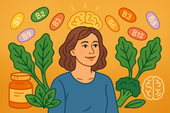
B Vitamins for Mental Clarity During Menopause
Nutrients are the foundation of mental and physical balance during menopause. Discover how vitamins, minerals, and whole foods like leafy greens, fish, nuts, and citrus can fuel energy, clarity, and calm while supporting hormonal health. 🌿✨
-

Mood Swings and Menopause: Natural Nutrient Support
Probiotics do more than support digestion — they help balance mood, hormones, and immunity too. Learn how a healthy gut microbiome can ease menopause symptoms, boost energy, and improve emotional resilience naturally. 🌿🦠
-

Brain Fog in Menopause: Supplements That May Help
Supplements can be powerful allies in restoring balance, energy, and focus—especially during menopause. Learn how nutrients like omega-3s, vitamin D, magnesium, and herbal adaptogens work together to support brain health, reduce stress, and promote lasting vitality. 🌿💊
-

Adaptogen Stacks for Reducing Night Sweats
Hormone detox isn’t about cleansing your body—it’s about restoring flow. Learn how the liver, gut, and endocrine systems work together to eliminate hormone buildup and how herbs like milk thistle, dandelion, and schisandra support balance, clarity, and natural vitality. 🌿💫
-
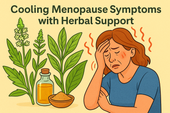
Cooling Menopause Symptoms with Herbal Support
Ashwagandha is one of nature’s most powerful adaptogens, helping women manage stress, sleep better, and balance hormones naturally. Discover how this ancient root supports calm energy, emotional resilience, and relief from menopause-related anxiety and fatigue. 🌿💫
-

Evening Primrose Oil and Menopause: What the Research Says
Hot flashes are one of the most common—and frustrating—symptoms of menopause. Discover what causes them, why the body’s “internal thermostat” becomes unbalanced, and the natural supplements and lifestyle shifts that can help you cool down, rest better, and feel more in control. 🔥💧
-

How Black Cohosh Helps with Menopausal Symptoms
Sleep disturbances are among the most exhausting symptoms of menopause—but they don’t have to rule your nights. Discover how natural strategies and calming supplements can help you fall asleep faster, stay asleep longer, and wake up feeling truly restored. 🌙💤
-

Natural Supplements That May Reduce Hot Flashes
Hot flashes can disrupt sleep, confidence, and daily comfort—but natural relief is possible. Discover the best research-backed supplements like black cohosh, red clover, and licorice root that may reduce hot flashes, balance hormones, and restore inner calm during menopause. 🌿💫
-

Omega-3s and Menopause: Supporting Mood and Inflammation
Omega-3 fatty acids are essential for hormonal harmony, brain function, and emotional balance—especially during menopause. Learn how these healthy fats reduce inflammation, support heart health, and restore calm, vitality, and focus through every stage of midlife. 🌊💫
-

The Role of Vitamin D in Menopausal Health
Vitamin D plays a powerful role in menopausal health—supporting bone strength, hormone balance, and mood stability. Discover how optimizing your vitamin D levels can improve sleep, energy, and emotional well-being while protecting long-term vitality through every stage of menopause. 🌞💪
-

Magnesium for Menopause: Relaxation, Sleep, and Hormonal Support
Self-regulation is the art of staying calm, centered, and in control—no matter what life throws your way. Learn how to strengthen emotional balance, manage stress responses, and cultivate inner peace through mindful techniques that reconnect your heart, body, and brain. 🌿💫
-

Can Adaptogens Like Ashwagandha Ease Menopausal Symptoms?
Brain fog during menopause can make even simple tasks feel overwhelming—but you’re not losing your sharpness, your hormones are simply shifting. Discover how adaptogens like ashwagandha and key nutrients can restore mental clarity, balance cortisol, and bring calm focus back to your day. 🌿🧠
-

Supplements That Support Hormonal Balance During Menopause
Herbal supplements have supported women’s health for centuries—and modern science is finally catching up. From ashwagandha and maca to red clover and rhodiola, discover how nature’s most trusted herbs can calm stress, balance hormones, and enhance energy through every life stage. 🌿✨
-
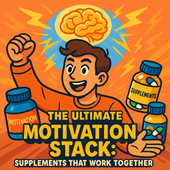
The Ultimate Motivation Stack: Supplements That Work Together
Discover how therapy helps restore motivation, focus, and emotional balance alongside supplement and mindset strategies. This empowering article explores how addressing thought patterns and emotional blocks through therapy can complement biochemical tools for long-term drive and well-being. 🧠💬
-

Entrepreneurial Drive: Can Supplements Help You Avoid Burnout?
Entrepreneurship demands energy, creativity, and mental resilience—but without balance, it leads to burnout. This in-depth article explores how nootropic supplements, adaptogens, and mindset tools can help entrepreneurs sustain motivation, manage stress, and keep their drive sharp for the long haul. 🚀💼
-

Supplements for Students: Staying Motivated Through Exams
Feeling burned out before finals? Discover how the right supplements can help students stay focused, calm, and motivated through exam season. This guide explores science-backed nutrients, brain-boosting herbs, and mindset tools that fuel clarity, memory, and stress resilience when it matters most. 🎓⚡
-
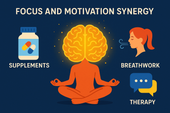
How Nootropic Stacks Can Enhance Drive and Focus Together
Discover how nootropic stacks can reignite both your drive and focus by balancing key neurotransmitters like dopamine and acetylcholine. This in-depth guide explores the science behind motivation, how supplements enhance cognitive performance, and how breathwork and therapy complete the picture for lasting mental clarity. 🧠✨
-
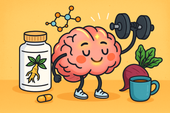
Natural Pre-Workout Supplements for Motivation and Mental Sharpness
Adaptogens are nature’s stress balancers 🌿 — powerful herbs like Ashwagandha, Rhodiola, and Holy Basil that help your body stay calm, focused, and resilient. By regulating cortisol and supporting energy balance, they boost motivation, endurance, and emotional stability — naturally. 🌞🧠
-
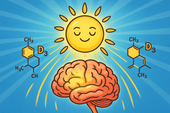
The Role of Vitamin D in Mental Drive and Ambition
Motivation is more than mindset — it’s energy in motion ⚡🧠. It comes from a balance of biology, emotion, and purpose. When your brain, body, and habits align, drive becomes effortless. Learn how to spark consistency, overcome dips, and build unstoppable momentum naturally. 🌿✨
-
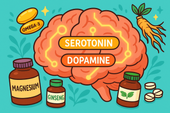
Serotonin, Dopamine, and Motivation: Can Supplements Really Help?
Ginseng is the ultimate vitality root 🌿⚡ — long praised for enhancing focus, energy, and motivation without the crash. By balancing stress hormones, boosting dopamine, and improving brain oxygenation, this adaptogenic powerhouse helps you feel clear, strong, and ready to take action. 🧠✨
-

How Ginseng Helps Support Drive, Motivation, and Energy
Ginseng is nature’s endurance root 🌿⚡ — a timeless adaptogen that fuels focus, drive, and resilience from the inside out. By balancing cortisol, boosting dopamine, and supporting mitochondrial energy, ginseng helps you feel clear, strong, and steady — no crash, just sustainable vitality. 🧠✨
-
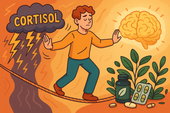
The Stress–Motivation Connection: Supplements That Balance Cortisol
Vitamin D — the “sunshine nutrient” ☀️ — plays a crucial role in mental health, motivation, and energy regulation. Low levels can lead to fatigue, low mood, and sluggish focus. Learn how sunlight, nutrition, and supplementation can restore your inner light and boost emotional balance naturally. 🌿🧠
-

When Low Mood Drains Your Drive: Natural Support Options
Vitamin D is more than the “sunshine vitamin” ☀️ — it’s a key player in mood, motivation, and overall brain health. Low levels can lead to fatigue, low drive, and seasonal sadness. Learn how sunlight, supplements, and nutrition can help restore balance and lift your emotional energy naturally. 🌿🧠
-

How Adaptogenic Herbs Help You Stay Consistent
Adaptogens are nature’s resilience enhancers 🌿. From Ashwagandha to Rhodiola and Holy Basil, these herbs help your body adapt to stress, balance cortisol, and maintain steady energy. Learn how they build inner stability — keeping your focus, mood, and motivation consistent through life’s ups and downs. ⚡🧘
-
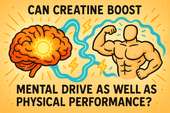
Can Creatine Boost Mental Drive as Well as Physical Performance?
IQ, or intelligence quotient, measures more than problem-solving — it reflects how efficiently your brain processes, adapts, and connects ideas 🧠⚡. While genetics play a role, lifestyle, nutrition, and brain health all influence cognitive performance. Learn how to support mental sharpness and cognitive growth naturally. 🌿✨
-
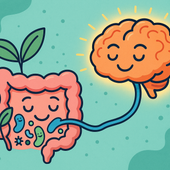
The Link Between Gut Health and Motivation: Probiotics Explained
Serotonin — the “feel-good” neurotransmitter 🌞 — plays a powerful role in mood, motivation, and overall emotional balance. Produced mostly in the gut, it connects digestion, happiness, and focus through the gut-brain axis. Learn how to naturally support serotonin for calmer energy and lasting motivation. 🌿✨
-
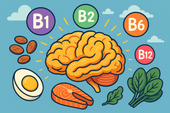
How B Vitamins Fuel Motivation and Energy at the Cellular Level
B vitamins are the body’s natural energy engines ⚡. They convert food into fuel, support dopamine for motivation, and power brain cells at the mitochondrial level. From B1 to B12, these nutrients help you stay focused, resilient, and full of drive — every single day. 🌿🧠
-
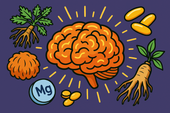
Supplements That Support Mental Endurance for Long Projects
Mindset is more than motivation — it’s the mental framework that shapes how you respond to challenges and pursue goals 🌿🧠. A growth mindset turns obstacles into opportunities, while a fixed mindset fuels self-doubt. Learn the science behind mental resilience and how to cultivate a mindset that sustains focus, creativity, and long-term success. ✨
-
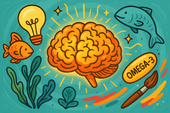
How Omega-3s Influence Drive, Creativity, and Problem-Solving
Sleep isn’t just rest — it’s the foundation of mental clarity, emotional balance, and motivation 🌙💤. During deep sleep, your brain resets stress hormones, consolidates memory, and clears away mental fog. Learn how better sleep supports neuroplasticity, creativity, and lasting energy for your day. 🌿✨
-
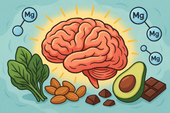
Can Magnesium Improve Your Focus and Motivation?
Caffeine is the world’s favorite stimulant ☕ — boosting alertness, sharpening focus, and lifting motivation within minutes. But there’s real science behind that morning cup. Learn how caffeine works on adenosine and dopamine, how to avoid the crash, and how to use it strategically for sustained energy and mental performance. ⚡🧠
-
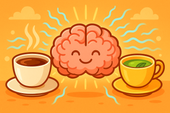
The Role of L-Theanine and Caffeine in Daily Motivation
Cortisol — often called the “stress hormone” — is both your alarm system and your reset button ⚡. It keeps you alert in the morning and helps you recover after challenges, but when it stays high too long, it drains your mood and energy. Learn how to balance cortisol naturally for steady focus, calm, and motivation. 🌿
-
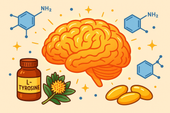
Supplements That Support Dopamine for Drive and Reward
Curcumin — the golden compound in turmeric — is more than a spice 🌿✨. It’s a powerful anti-inflammatory that protects dopamine neurons, supports brain clarity, and enhances mood. Learn how curcumin’s antioxidant properties help stabilize energy, reduce brain fog, and promote emotional resilience naturally. 🌼
-
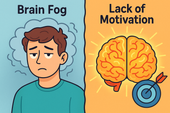
Brain Fog vs Lack of Motivation: What’s Really Holding You Back?
Hormones are the body’s invisible messengers — shaping energy, mood, focus, and motivation 🧠🌿. When they’re balanced, you feel clear, confident, and emotionally steady. Learn how key hormones like cortisol, serotonin, dopamine, and estrogen interact to influence your mental well-being and what you can do to keep them in harmony naturally. ✨
-

Supplements for Staying Collected During Disagreements
Science helps us understand why we feel, react, and change 🌿🧠. From brain chemistry to neurotransmitters and hormones, every emotional response has a biological root. Explore how research in neuroscience and psychology reveals practical ways to stay balanced, focused, and emotionally strong in daily life. 🔬✨
-

Managing Anger While Traveling
Supplements can help calm your nervous system and keep your emotions balanced while on the go 🌿. From magnesium and ashwagandha to L-theanine and omega-3s, learn how natural nutrients support stress resilience, focus, and emotional control — even through long flights, delays, and unpredictable travel days. ✈️
-

How to Keep Your Temper in Online Debates
Supplements can do more than fill nutritional gaps — they can help balance your energy, focus, and stress response naturally 🌿. From adaptogens to amino acids, the right nutrients support your brain chemistry and hormonal harmony for calm, steady productivity. Discover how supplements can build long-term resilience without the crash. ⚡🧠
-

Supplements to Stay Calm Before Public Speaking
Breathwork is one of the simplest yet most powerful tools for calming pre-performance stress 🌬️. By slowing and deepening your breathing, you lower cortisol, steady your heartbeat, and re-center your mind. Learn the science behind how controlled breathing activates your parasympathetic nervous system — helping you speak, perform, or focus with grounded confidence. 🌿
-

How to Handle Customer Service Stress Without Losing Your Cool 💬🧘♀️
Customer service can test even the calmest person’s patience. 😤 Learn how to handle difficult clients and daily pressure without losing your cool — through better mindset management, calming breathwork, and practical communication tools. Stay grounded, protect your energy, and transform stress into strength. 🌿
-
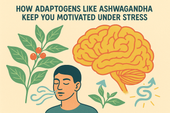
How Adaptogens Like Ashwagandha Keep You Motivated Under Stress
Feeling overwhelmed and unmotivated? 🌿 Discover how adaptogens like Ashwagandha can help you stay centered, focused, and energized under stress. Learn how supplements, breathwork, and therapy work together to restore your natural motivation and help you thrive — even during life’s toughest moments. 💪✨
-

Supplements That Support Long-Term Productivity Without the Crash ⚡🌿
Cortisol — your body’s main stress hormone — can be both your best friend and worst enemy. ⚡ When balanced, it keeps you focused, energized, and ready to act. But when it stays high for too long, it leads to fatigue, anxiety, and emotional crashes. Learn how to regulate cortisol naturally through supplements, sleep, and stress management to maintain calm, steady productivity. 🌿
-
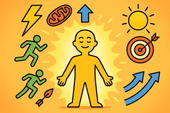
Why Energy Levels and Motivation Go Hand in Hand ⚡🧠
B-vitamins are the brain’s spark plugs 🔋. They turn food into fuel, support neurotransmitter production, and keep your mood, energy, and focus balanced. Learn how vitamins like B6, B9, and B12 work together to power the nervous system, reduce fatigue, and keep motivation high. 🌿
-
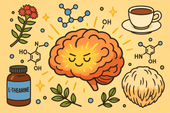
The Science of Motivation: Can Nootropics Help You Stay Focused? 🧠⚡
Nootropics are nature’s tools for sharper thinking and sustainable focus 🧠🌿. From Rhodiola and Lion’s Mane to L-theanine and Bacopa, these brain-boosting compounds enhance motivation, memory, and stress resilience. Learn the science behind how nootropics work — and how to use them safely for peak mental performance and clarity. ⚡
-
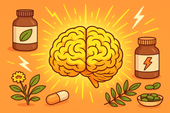
How Natural Supplements Can Boost Your Daily Drive
Cortisol is your body’s main stress hormone — powerful, necessary, but often misunderstood. ⚡ When balanced, it keeps you alert and energized; when chronically elevated, it drains mood, motivation, and focus. Learn how to regulate cortisol naturally through nutrition, supplements, and calming lifestyle habits for steady energy and emotional balance. 🌿
-
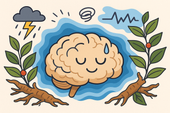
Ashwagandha for Stress and Low Mood
Breathwork is more than a relaxation tool — it’s a way to rewire your nervous system. 🌬️ Through intentional breathing, you can reduce stress hormones, improve focus, and calm emotional turbulence. This guide explores the science of breathwork and its powerful effects on mental clarity, resilience, and emotional regulation. 🌿
-
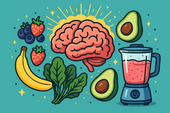
Mood-Boosting Smoothie Recipes
Your blood sugar affects far more than energy — it influences mood, focus, and emotional stability too 🍎. Learn how maintaining balanced glucose levels supports brain health, reduces anxiety, and prevents emotional crashes. Discover the foods and habits that keep your mind calm and your energy steady throughout the day. 🌿
-
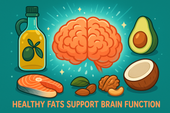
How Healthy Fats Support Brain Function
Your brain thrives on healthy fats 🧠💧. From omega-3s to MCTs, the right fats enhance focus, memory, and mood while protecting against inflammation and aging. This article explores how good fats — like those from olive oil, salmon, avocado, and nuts — build sharper thinking, emotional balance, and lasting brain vitality. 🌿
-
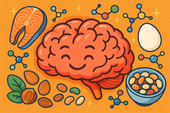
The Role of Protein in Mental Clarity
Protein isn’t just for muscles — it’s for your mind. 🧠 This guide explores how amino acids from high-quality protein fuel neurotransmitters, stabilize mood, and sharpen focus. Learn how balanced protein intake supports dopamine, serotonin, and energy regulation to boost mental clarity and emotional stability naturally. 🍳🌿


















































